Step into the world of rock and roll as you embark on a journey to unravel the secrets behind one of the most iconic sounds in music history. This riveting blog post will delve deep into the realm of guitar legend Jimi Hendrix and investigate the instrument that played a pivotal role in shaping his mesmerizing melodies. Prepare to be transported back in time as this guide will explore the enigma of Jimi Hendrix’s electrifying sound and uncover the legendary guitar that propelled him to music immortality. Get ready to strum along on a whirlwind of curiosity and intrigue as you ask yourselves the question that has echoed through the ages: What kind of guitar did Jimi Hendrix play?
James Marshall Hendrix’s story
Jimi Hendrix is widely regarded as one of the greatest and most influential guitarists in rock music history. Born Johnny Allen Hendrix, he changed his name to James Marshall in honor of his father Al’s army buddy James Marshall. Hendrix is best known for songs such as “Purple Haze”, “The Wind Cries Mary”, and “Hey Joe”, all of which became popular hits. As an entertainer and performer, Hendrix was often noted for his wild stage antics, such as playing the guitar with his teeth or behind his back.
As a young and talented musician, Hendrix quickly gained a following in the Seattle music scene. He moved to London in 1966, where he formed The Jimi Hendrix Experience with bassist Noel Redding and drummer Mitch Mitchell. It was here that Hendrix achieved widespread fame and recognition as an innovative guitarist and songwriter. His musical style combined elements of blues, rock, and jazz, and his lyrics often reflected his interest in politics and the civil rights movement. He is widely regarded as one of the greatest guitarists in rock music history.
His impact on popular culture has been immense, with his face appearing on everything from t-shirts to posters. His signature style and sound have been an inspiration to generations of musicians, and he continues to be revered as one of the greatest guitarists in rock music history. He will always be remembered for his genius, passion, and the incredibly unique style of music he created. His legacy continues to live on through his music and the many musicians who have been inspired by him.
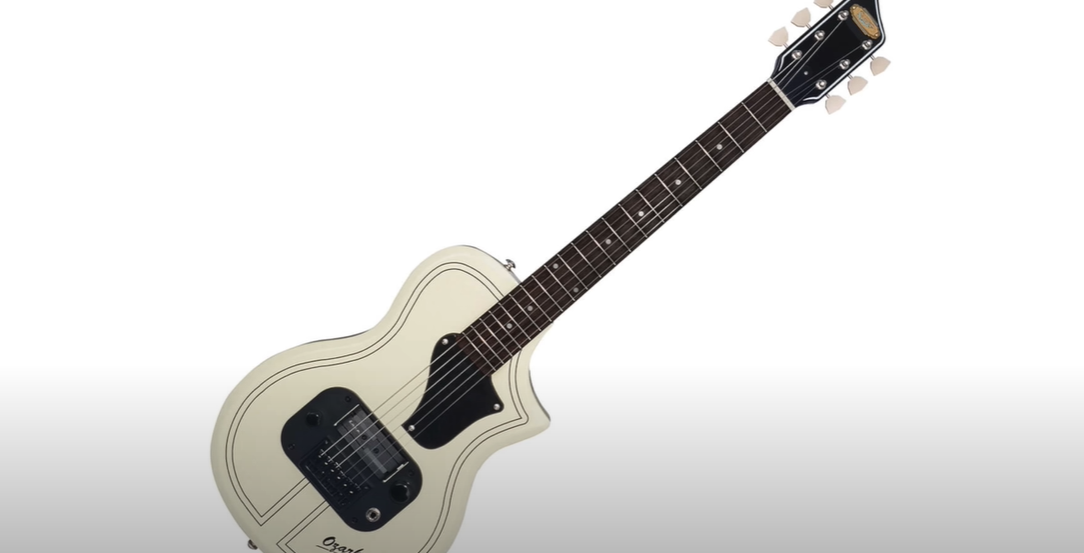
Although Jimi Hendrix is gone, his spirit will never die. He left behind a vast body of work that stands as a testament to his greatness, and it remains an inspiration for all who listen. His legacy will continue to be remembered and celebrated long after he’s gone, making him rightfully one of the most important figures in rock music history.
The legacy of Jimi Hendrix lives on through his incredible body of work and the influence it has had on generations of musicians. His influence can still be heard today, serving as a reminder of the power and beauty of music as an art form. His passion for music, along with his immense creative vision, will continue to inspire musicians and fans alike for many years to come [1].
Jimi Hendrix’s guitars
1964 Fender Stratocaster, Olympic White “Linda”
Jimi Hendrix, renowned for his guitar virtuosity, famously acquired his iconic Fender Stratocaster in 1964. Affectionately named “Linda” after a beloved girlfriend, this legendary instrument boasted a stunning Olympic White finish that exuded elegance. Adorned with three single-coil pickups, a volume knob, and a tremolo bar, it offered unparalleled versatility for Jimi’s musical creations. Not only did he utilize this exceptional guitar for recording purposes, but it also served as his faithful companion during electrifying live performances that captivated audiences worldwide. The harmonious bond between Jimi and “Linda” continues to resonate as a testament to his profound musical legacy.
1966 Fender Stratocaster, Sunburst “Izabella”
Jimi Hendrix, the legendary guitarist, known for his unparalleled skills and innovative style, soon added another Strat to his collection. This new addition, adorned with a captivating sunburst finish, was affectionately named “Izabella” after one of the influential women in his life. Izabella boasted three powerful single-coil pickups, perfectly complemented by a single volume knob, adding to its versatility. To match its mesmerizing sound, this iconic guitar also featured an elaborate paint job that showcased Hendrix’s artistic flair.
As Jimi Hendrix’s musical journey unfolded, Izabella quickly became his go-to instrument for electrifying live performances. With its unmistakable presence, this remarkable guitar was a regular sight on stage, accompanying Hendrix on his awe-inspiring musical odyssey.
1965/66 Fender Stratocaster, Black “Monterey”
Jimi Hendrix, the legendary guitarist, acquired this magnificent guitar sometime in 1965. With its sleek black finish, three single-coil pickups, a volume knob, and a tremolo bar, this instrument became an extension of Hendrix’s artistic expression. It was with this very guitar that he mesmerized the audience at the iconic Monterey Pop Festival with his unforgettable rendition of The Star Spangled-Banner. This guitar, frequently witnessed on stage with Jimi Hendrix, has since become an enduring symbol of his unparalleled talent and stands as one of the most cherished and iconic guitars in the history of music.
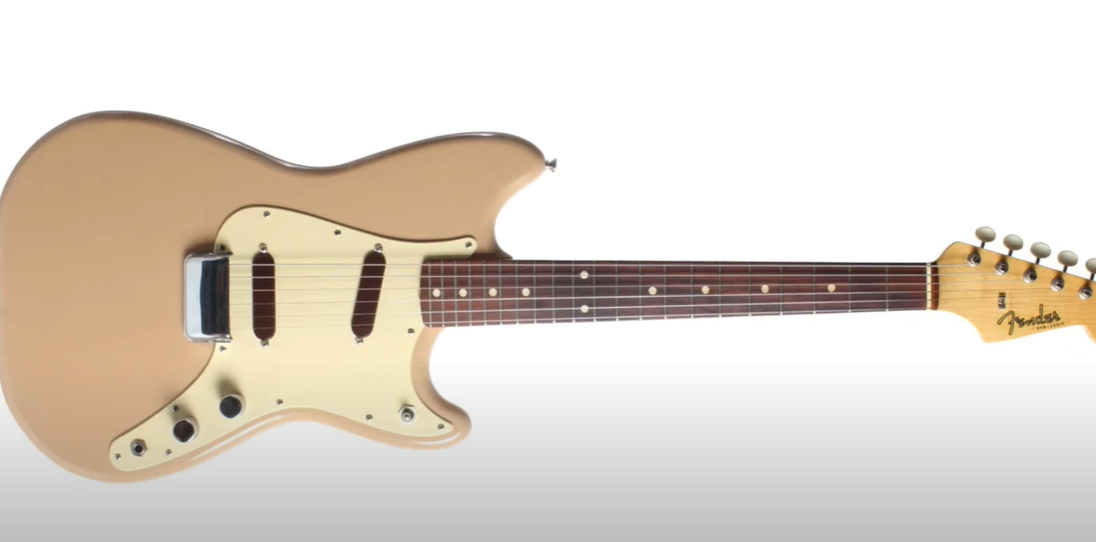
1964 Gibson SG Custom, White “Betty Jean”
In 1964, the legendary guitarist Jimi Hendrix made a memorable purchase – a stunning white Gibson SG. With meticulous attention to detail, he named it Betty Jean, after one of his early girlfriends. This iconic guitar boasted three double-coil pickups, providing a versatile range of tones. The instrument featured two tone knobs for further customization, a vibrato arm for expressive playing, and a sleek Olympic White finish that exuded elegance and style. Throughout his illustrious career, Jimi’s beloved Betty Jean became an integral part of his musical journey, leaving an indelible mark on the world of music. It can be heard enchanting listeners on numerous studio recordings, forever preserving the legacy of this remarkable instrument.
1968 Gibson Flying V, Natural “Johnny B. Goode”
In 1968, the legendary Jimi Hendrix acquired a stunning natural-finished Gibson Flying V, a guitar that would become an iconic part of his musical journey. Inspired by the Chuck Berry classic “Johnny B. Goode,” Jimi affectionately named this instrument after the timeless song. The Gibson Flying V boasted two powerful double-coil pickups, providing Jimi with a wide range of tonal possibilities. With two volume knobs and a vibrato arm, this guitar allowed him to unleash his signature expressive playing style.
While Jimi primarily utilized this masterpiece in the studio for his remarkable recordings, it also made occasional appearances on stage, captivating audiences with its distinctive sound and striking appearance. The Gibson Flying V became a symbol of Jimi’s artistic brilliance and continues to inspire countless musicians to this day.
1969 Fender Stratocaster, Red “Unicorn”
This legendary guitar, known as the “Black Widow,” was Jimi Hendrix’s cherished instrument prior to his untimely demise in 1970. Adorned with a striking red finish, it boasted three powerful single-coil pickups, allowing Hendrix to unleash his signature tone. With a single volume knob and a tremolo bar for expressive bends, this guitar possessed the soul of a true rock and roll icon. Though Jimi only graced the stage with it for a handful of live performances, its presence continues to resonate as a timeless symbol of his unparalleled musical legacy.
1967 Gibson Flying V, Red “Firebird”
In 1967, the legendary Jimi Hendrix made the memorable purchase of a vibrant red Gibson Flying V, which he fittingly christened the Firebird. This iconic guitar boasted two powerful double-coil pickups, giving it a distinctive sound that resonated through the air. With its two volume knobs and a vibrato arm, this instrument became an indispensable tool for Hendrix during his recording sessions, contributing to the creation of some of his timeless hits. Today, the Firebird remains an object of desire for collectors and enthusiasts alike, a symbol of Hendrix’s extraordinary talent and enduring legacy in the world of music.
1968 Fender Stratocaster, White “Woodstock”
In 1968, the legendary Jimi Hendrix acquired this iconic Fender Stratocaster, a guitar that would become synonymous with his name. With its stunning white finish and three single-coil pickups, this instrument was not only visually striking but also produced a distinct and electrifying sound. Complete with a tremolo bar and a volume knob, it offered Jimi the versatility and control he needed to create his unique style.
It was with this very guitar that Jimi Hendrix delivered his unforgettable rendition of the national anthem at Woodstock, a performance that would forever etch his name in music history. The raw passion and artistry that flowed from his fingertips as he played this instrument captivated the audience and left an indelible mark on the world.
This Fender Stratocaster quickly became Jimi’s go-to guitar for live performances, bearing witness to his incredible talent and skill on stage. Sadly, his untimely death in 1970 marked the end of an era, but this instrument continues to serve as a symbol of his extraordinary legacy.
As you admire this treasured piece of music history, you are reminded of the immense influence and innovation that Jimi Hendrix brought to the world of guitar playing. His mastery of this instrument remains unparalleled, and his legacy lives on through the timeless melodies he created with this very Stratocaster.
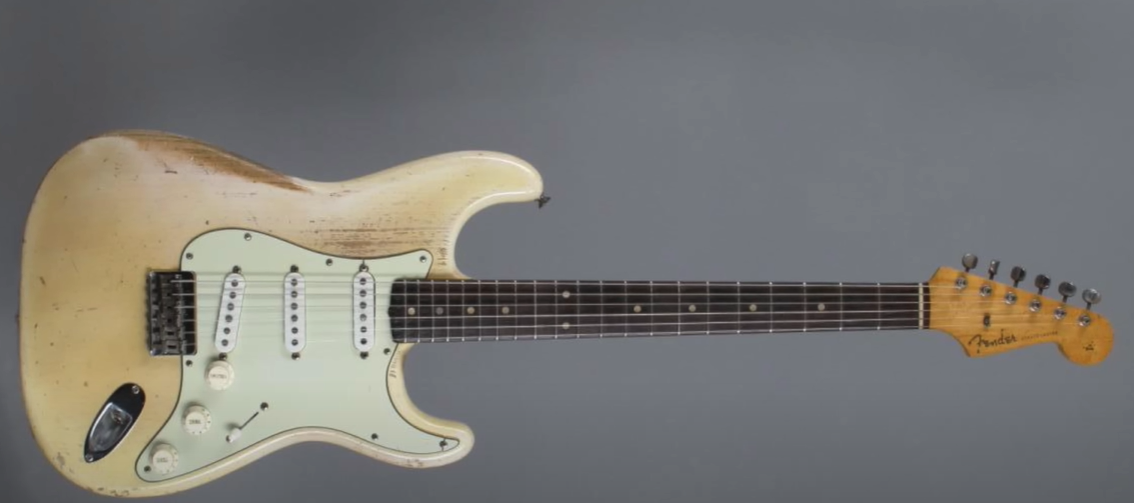
##1966 Gibson Flying V, Natural “Purple Haze”
Jimi Hendrix purchased this guitar in 1966 and named it after one of his most famous songs, Purple Haze. The guitar featured two double-coil pickups, two tone knobs, a vibrato arm, and a natural finish. Jimi used this instrument primarily in the studio for recording purposes. It is now a collector’s item and one of the most sought-after guitars of all time.
1966 Fender Stratocaster, Black “Lover Man”
Jimi Hendrix bought this black Fender Stratocaster in 1966 and named it Lover Man after another one of his hits. The guitar featured three single-coil pickups, one volume knob, and a tremolo bar. Jimi used this instrument primarily on stage during live performances and it can be heard on many of his classic records. This iconic guitar remains an important part of rock history and is still highly sought after by collectors and aficionados alike [2].
What amps did Jimi use?
Marshall Super 100/JTM45
The Marshall JTM45 was Jimi Hendrix’s target amplifier in the early stages of his career. This particular amp model was a big part of what made Jimi so famous. It had two channels, with one being a treble and the other having more bass. The original version of this amp had 25 watts, but there were also 35-watt versions available with higher gain and more power. Jimi would often use multiple amplifiers at once, turning the two channels of one amp into the left and right sides separately. He was also a master of pushing his amps to their limits, creating unique tones that gave his sound its unmistakable edge.
Another famous amplifier in Hendrix’s arsenal was the Marshall Super 100/JTM45. This was a more powerful version of the JTM45, with 50 watts and bigger transformers. Some believe this is the amp that Jimi used when he recorded “The Wind Cries Mary.” It had two channels just like the JTM45, but they were both modified to have higher gain and more headroom. This allowed Jimi to get some really crunchy tones at high volumes.
Sound City One Hundred
The Sound City One Hundred was a 100-watt amp that Jimi used later in his career. This particular model had three channels, with each one being voiced differently for different tones. It also had a lot of headroom and power, which allowed him to get some really loud tones without distorting the sound. Like the Marshall Super 100/JTM45, this amp was also capable of producing a wide range of sounds.
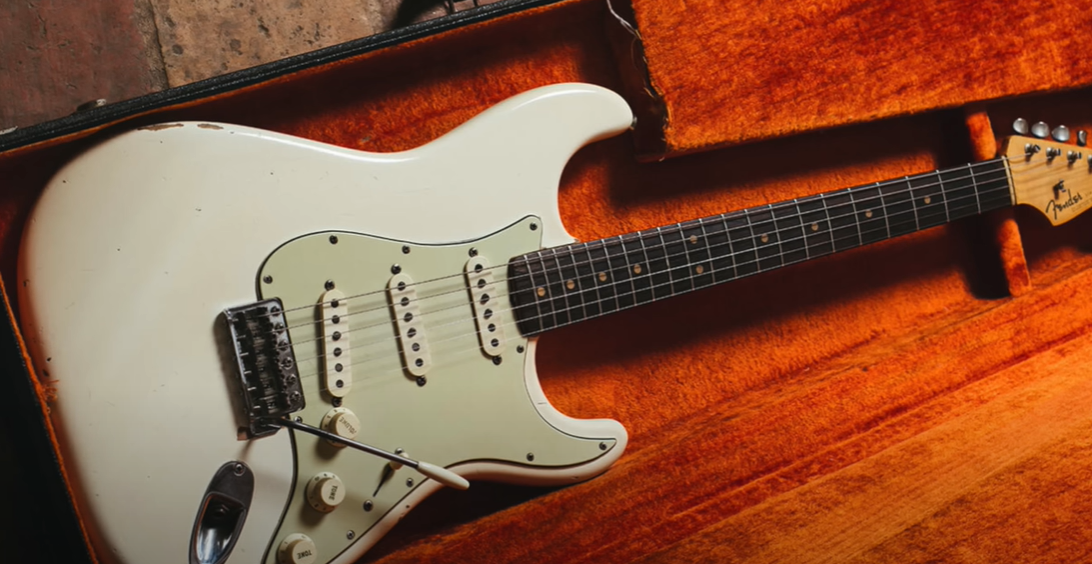
Univox Super-Fuzz (FU-2)
The Univox Super-Fuzz (FU-2), a legendary fuzz pedal, played a pivotal role in shaping Jimi’s iconic sound. With its distinctive crunchy and raw tones, this pedal allowed him to carve his own path and set himself apart from other guitarists of his time. The blistering fuzz tones generated by the Super-Fuzz added a layer of aggression and intensity to Jimi’s music, making tracks like “Purple Haze” instantly recognizable and etching his name in the annals of guitar history. Truly, this pedal was one of the key ingredients that contributed to the unparalleled uniqueness of Jimi Hendrix’s sound.
Vox AC30
The Vox AC30, a renowned amplifier, was one of Jimi’s preferred choices. It gained significant prominence when he electrified the stage at Woodstock, delivering a captivating performance. This iconic amp offered a smooth and clean tone that seamlessly transitioned into a powerful overdrive, giving Jimi the versatility he desired. Notably, the Vox AC30 also found favor among other legendary guitarists, such as the Beatles and Keith Richards of The Rolling Stones, solidifying its status as a timeless classic in the world of music.
Fender Dual Showman
The Fender Dual Showman was one of Jimi’s favorite amplifiers. This model had two channels, with one being a clean channel and the other having more distortion. The Dual Showman also had big transformers which gave it more headroom and power than the JTM45 and Super 100/JTM45. Jimi used this amp for a lot of his live performances, as it allowed him to get a wide range of tones without having to switch amps.
Finishing the setup… Hendrix’s pedals
Dallas Arbiter Fuzz Face
The Fuzz Face is a classic pedal used by many famous guitarists, and Hendrix was no exception. This simple yet powerful pedal produces a unique distortion tone that helped him create some of his signature sounds. It has two knobs for adjusting the volume and fuzz amount, respectively. The design of this pedal is inspired by 1960s-era models, so it adds a vintage vibe to any setup.
Electro-Harmonix Big Muff Pi
This is another classic pedal that Hendrix was known to use. It’s capable of producing an array of distortion sounds, ranging from heavy metal crunch to smooth jazz tones. The Big Muff Pi has three knobs for adjusting the tone, volume and sustain, respectively. This pedal has been around since the 1970s and is still popular today due to its versatile sound-shaping capabilities.
Roger Mayer Octavia
The Octavia was Hendrix’s signature pedal. Created by Roger Mayer, this rare pedal was designed to give guitarists access to octave sounds similar to an organ or synth. It has two knobs for controlling the octave up effect and a mix knob to adjust the blend of wet/dry signals. This pedal was used on some of Hendrix’s most famous recordings and is still sought after by collectors today.
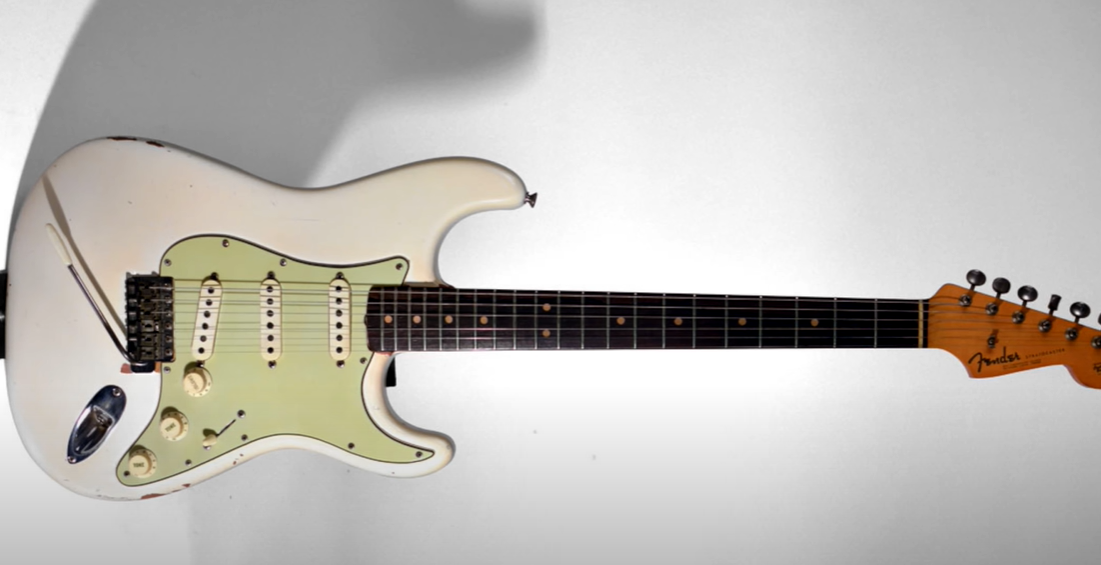
Vox V846 Wah-Wah
The Wah-Wah is another iconic pedal that Hendrix was known to use. This classic wah-wah effect is created by sweeping the frequency spectrum of a guitar signal with a filter. It’s often used for creating funky, talking guitar tones. The Vox V846 has three knobs for adjusting the intensity, tone and volume of the effect. Its vintage design is reminiscent of the wah-wah pedals Hendrix used in the late 1960s.
Uni-Vibe Chorus/Vibrato
The Uni-Vibe was another classic effect pedal used by Hendrix. It’s capable of producing a swirling, psychedelic sound when combined with other pedals. The Uni-Vibe has two knobs for controlling the speed and intensity of the effect. This pedal was used to great effect on Hendrix’s song “Machine Gun,” creating an ethereal soundscape that added a haunting atmosphere to his performance.
MXR Phase 90
The Phase 90 is another classic effects pedal used by Hendrix. It produces a swirling, ethereal sound similar to the Uni-Vibe but with more of a mellow tone. The Phase 90 has two knobs for controlling the speed and intensity of the effect. It’s often used for creating dreamy, shimmering textures that add depth and texture to any performance.
Univox Uni-Vibe Tremolo
This is a rare pedal used by Hendrix on occasion. It produces a pulsing, tremolo effect that can add an interesting texture to any performance. The Uni-Vibe Tremolo has two knobs for controlling the rate and intensity of the effect. This pedal was often used in conjunction with other effects pedals to create unique textures and sounds. By combining it with other pedals, Hendrix was able to create some truly unique sounds.
Want to sound like Hendrix?
Guitars
To capture the essence of Jimi Hendrix’s iconic sound, it is crucial to have the right guitar at hand. One of his original choices was the Gibson Flying V, a legendary electric guitar renowned for its distinctive shape and inseparable connection to Hendrix himself. However, it’s worth noting that there are numerous other guitar options available to achieve his signature sound. For instance, Fender Stratocasters, Telecasters, and Les Pauls all offer their own unique qualities and can be excellent alternatives to explore when pursuing that Hendrix-inspired tone. So, whether you opt for the mesmerizing curves of the Flying V or the timeless allure of a Stratocaster, the possibilities to channel your inner Hendrix are vast and exciting.
Amps
To achieve the iconic Hendrix tone, having the right amplifier is crucial. For his legendary live performances, Hendrix relied on the powerful Marshall Super Lead 100W amp and cabinets, renowned for their versatility. This extraordinary amplifier excelled at producing both crisp, clean tones and rich, distorted sounds that defined Hendrix’s unique style. That being said, numerous other amplifiers can deliver equally impressive results. Among them, the classic Fender Twin Reverb and the beloved Vox AC30 are often favored by guitarists seeking to capture that unmistakable Hendrix sound. These amplifiers offer their own distinct characteristics, allowing musicians to explore different tonal possibilities and unleash their creativity on stage or in the studio.
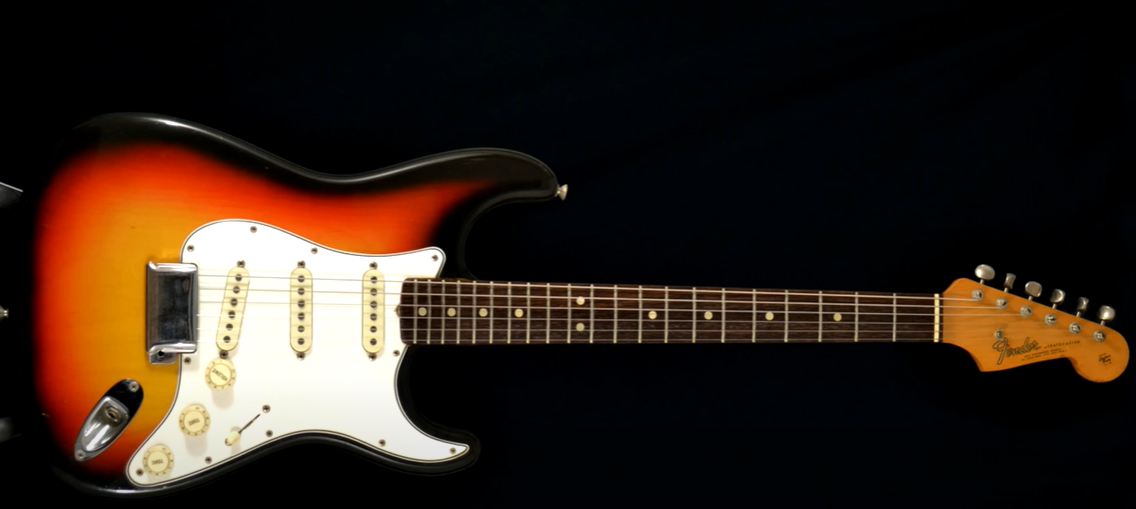
Effects
Hendrix, the legendary guitarist, was renowned for his unparalleled creativity in manipulating guitar effects. He skillfully employed various tools such as the iconic wah-wah, fuzzy distortion, and mesmerizing phase shifters to infuse his music with unparalleled texture and create a distinctive sonic experience. By experimenting with diverse combinations of effects, you can embark on an exhilarating sonic journey, exploring uncharted territories and discovering your own interpretation of the iconic Hendrix sound. Let your imagination soar and unlock new dimensions of musical expression!
Pedals
When it comes to choosing pedals for your guitar, it’s important to note that there is no one-size-fits-all solution. However, if you’re a fan of Jimi Hendrix and aiming to recreate his iconic sound, you might want to consider the Fuzz Face Distortion pedal and the Uni-Vibe Chorus/Vibrato pedal. These pedals have gained immense popularity among Hendrix enthusiasts due to their ability to capture his distinctive tone and style.
Of course, the world of guitar effects is vast and diverse, so don’t be afraid to venture beyond these options. Experimenting with different pedals and effects is key to finding your own unique sound and style. Whether it’s a classic overdrive, a dynamic delay, or a modulated tremolo, the possibilities are endless. So go ahead and explore, and let your creativity soar as you discover the perfect combination of pedals that resonates with your musical journey.
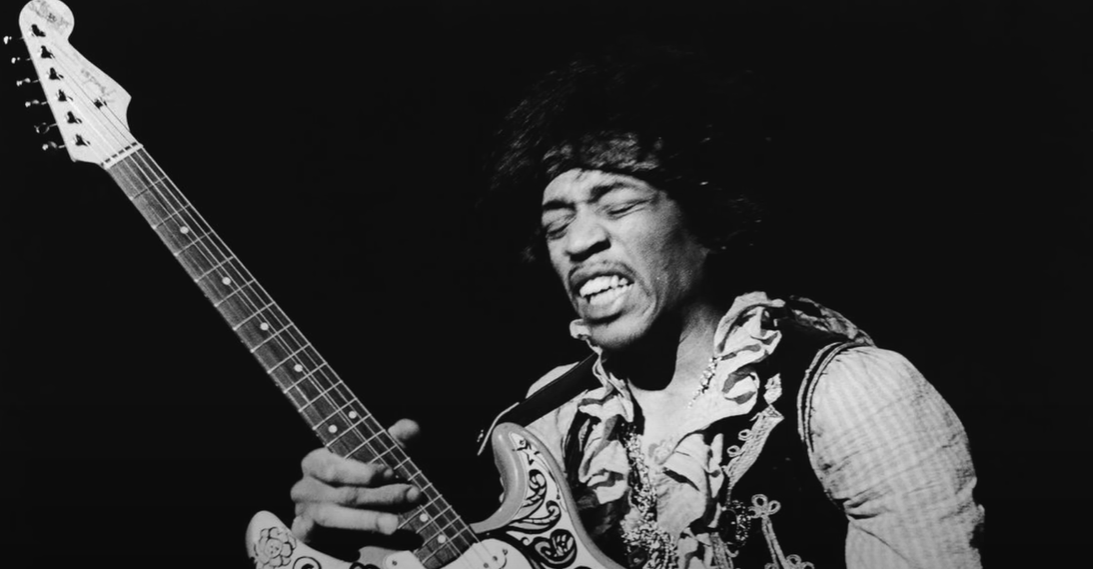
FAQ
What kind of guitar did Jimi Hendrix use?
Jimi Hendrix was famously associated with the Fender Stratocaster. He also played various Gibson and Epiphone models throughout his career, along with some other unusual instruments like the Hagstrom Viking, Maestro Rhythm King and Vox Phantom models. His guitar-playing style was unique and he often customized his guitars to suit his needs. He was known for playing upside-down and restringing his guitars to suit his left-handed playing. He was also known for experimenting with electronic effects like wah-wah pedals, fuzz boxes and octave dividers. He is credited as being one of the first guitarists to make full use of these effects in popular music.
What kind of amp did Jimi Hendrix use?
Jimi Hendrix, the legendary guitarist, was widely recognized for his preference for Marshall amplifiers, particularly the 100-watt plexi model, which contributed to his signature sound. However, it is worth noting that he also incorporated Fender amps into his setup at various points in his career, including the Twin Reverb and Super Reverb models. In addition to these iconic brands, Hendrix also explored the sonic possibilities offered by smaller, transistor-based amplifiers such as the Vox AC30 and AC15 models.
What set Hendrix apart as a true innovator was his experimentation with electronic effects to shape his unique tones. His pioneering use of a wah-wah pedal in conjunction with his Marshalls stands as a testament to his creative approach, resulting in some of his most iconic sounds that continue to inspire guitar players to this day.
What kind of guitar strings did Jimi Hendrix use?
Jimi Hendrix was known for using heavy gauge strings, usually in the range of 0.11 to 0.60 gauge. He was also known for using roundwound strings, as opposed to flatwounds which he noted were too mellow for his style of playing. He was also known for changing strings regularly and often used a variety of brands including Fender, GHS, Ernie Ball and Rotosound. His string gauges and choice of string materials often varied depending on the type of instrument he was playing and the musical context. One constant feature in his setup was to tune all of his guitars half-step down from standard tuning. This allowed him to find more creative ways of expressing himself, as well as making it easier for him to bend strings and create vibrato with his left hand.
What was Hendrix’s favorite guitar?
Jimi Hendrix was often seen playing his Fender Stratocaster, which he nicknamed “Black Beauty”. He purchased the guitar in 1966 and used it extensively throughout his career, tweaking its setup to perfectly suit his style of playing, including having it strung upside-down for left-handed play. He had several other guitars that he liked to play, such as the Gibson Flying V and the Hagstrom Viking, but his Stratocaster was always close to his heart. Hendrix’s ability to coax otherworldly sounds out of a guitar continues to astound and inspire guitarists around the world.
What kind of pick did Jimi Hendrix use?
Jimi Hendrix was known to use a variety of guitar picks, including plastic and tortoiseshell varieties. He was often seen using the classic Fender 351 shape, although he also used Dunlop Jazz III picks at various points in his career. His choice of pick often varied depending on the type of instrument he was playing, as well as the musical context. Regardless of what he was playing, Hendrix’s approach to the guitar was always unique and deeply personal. He continually pushed boundaries and explored new techniques and sounds that are still being imitated today.
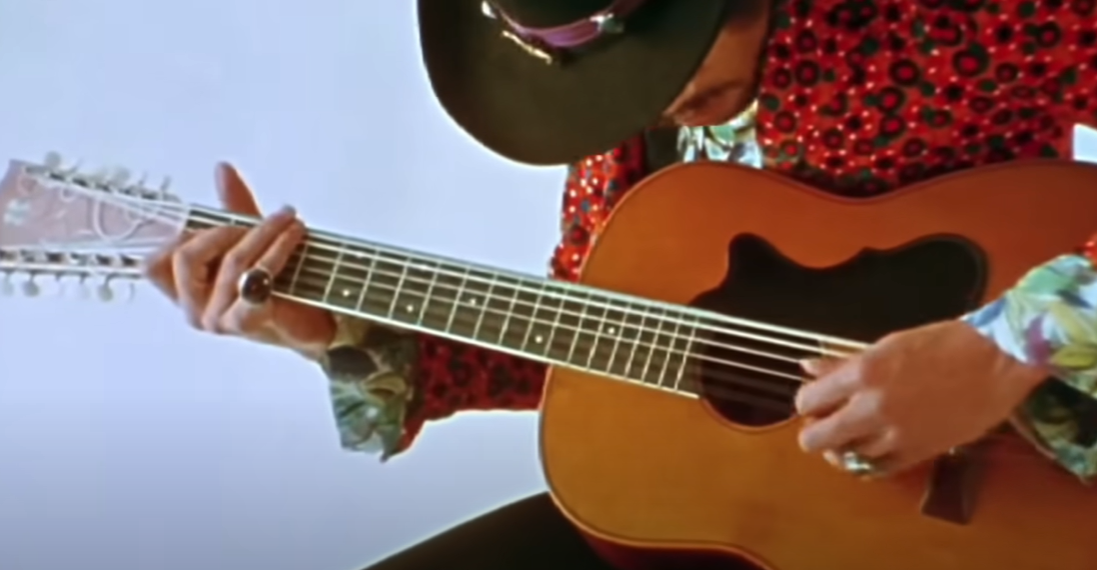
What was Jimi Hendrix’s writing process like?
Jimi Hendrix had a very distinct approach to songwriting that drew heavily on improvisation. He famously said that much of his greatest work was created spontaneously in the studio, often with little to no preparation beforehand. He was known for recording and layering multiple instruments on top of each other to create unique sonic textures. He also used a variety of effects to shape his sound, often combining new technologies with traditional instrumentation. His creative approach to music ultimately led him to become one of the most influential and revered guitarists of all time.
What kind of musical influences did Jimi Hendrix have?
Jimi Hendrix drew upon a vast array of musical influences from both the past and present. He was heavily influenced by blues musicians such as Robert Johnson, Muddy Waters and Little Richard, being especially drawn to their improvisatory approach to creating music. He was also strongly influenced by jazz musicians such as John Coltrane, Miles Davis and Thelonious Monk. Aside from these traditional influences, Hendrix also drew heavily upon the styles of popular acts like The Beatles and Bob Dylan. His unique approach to combining all of these influences is one of the many things that sets him apart as a guitar legend.
How much did Jimi Hendrix’s guitar sell for at auction?
In November 2020, Jimi Hendrix’s guitar sold for a record-breaking $2 million at an auction held by Julien’s Auctions. The guitar in question was his 1969 Fender Stratocaster, which he nicknamed “Black Beauty” and famously used during his performance of the national anthem at Woodstock in 1969. This sale set a new record for the highest price ever paid for a guitar at auction, demonstrating the enduring legacy of Hendrix’s influence as a guitarist. The instrument was purchased by Jim Irsay, owner of the Indianapolis Colts NFL team.
What kind of awards did Jimi Hendrix receive?
Jimi Hendrix was widely recognized as one of the most influential guitar players ever, and this was reflected in his numerous awards. In 1992 he was inducted into the Rock and Roll Hall of Fame, becoming one of only a select few to receive such an honor while still alive. He won several Grammy Awards over his career, including three for “Best Male Rock Performance” and two for “Best Pop Instrumental Performance”. He received a star on the Hollywood Walk of Fame in 1994, cementing his legacy as one of the most important artists of all time. His awards and accolades speak to the profound impact he had on music throughout his career.
Useful Video: The Guitars of Jimi Hendrix: A Short History
Conclusion Paragraph
So, Jimi Hendrix played a huge role in the music world, and he was an incredibly influential figure in the history of rock. His songs showed a unique and creative approach to guitar playing that inspired many musicians to follow in his footsteps. He also influenced many other genres of music with his distinct sound. Jimi Hendrix will forever remain one of the most iconic figures in music history, and his legacy will live on for generations to come. His influence is still felt in the music industry today, and his impact is undeniable.
References:
- https://www.jimihendrix.com/biography/
- https://www.groundguitar.com/jimi-hendrix-gear/




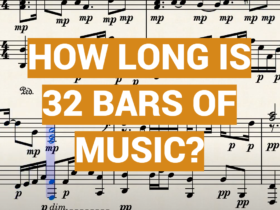
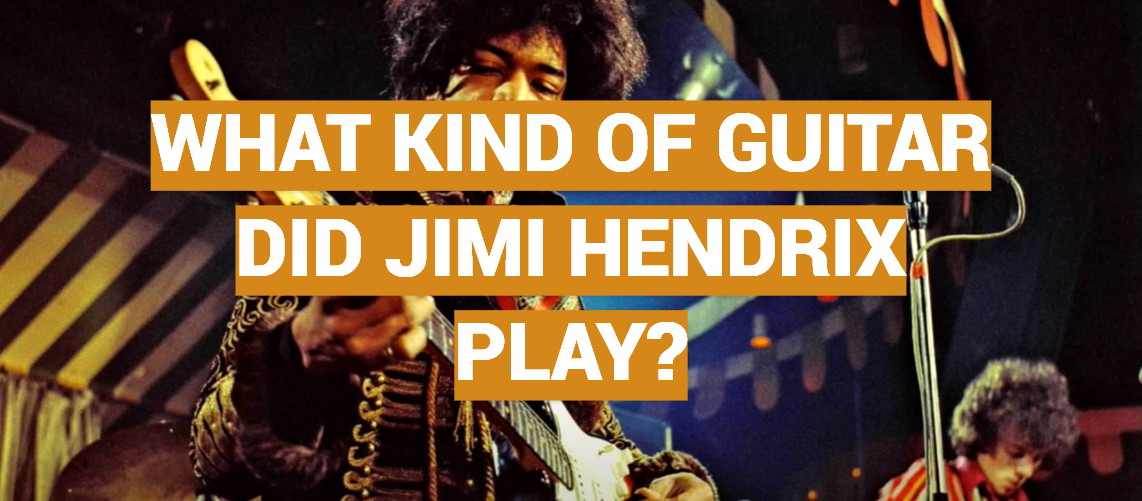




Leave a Reply